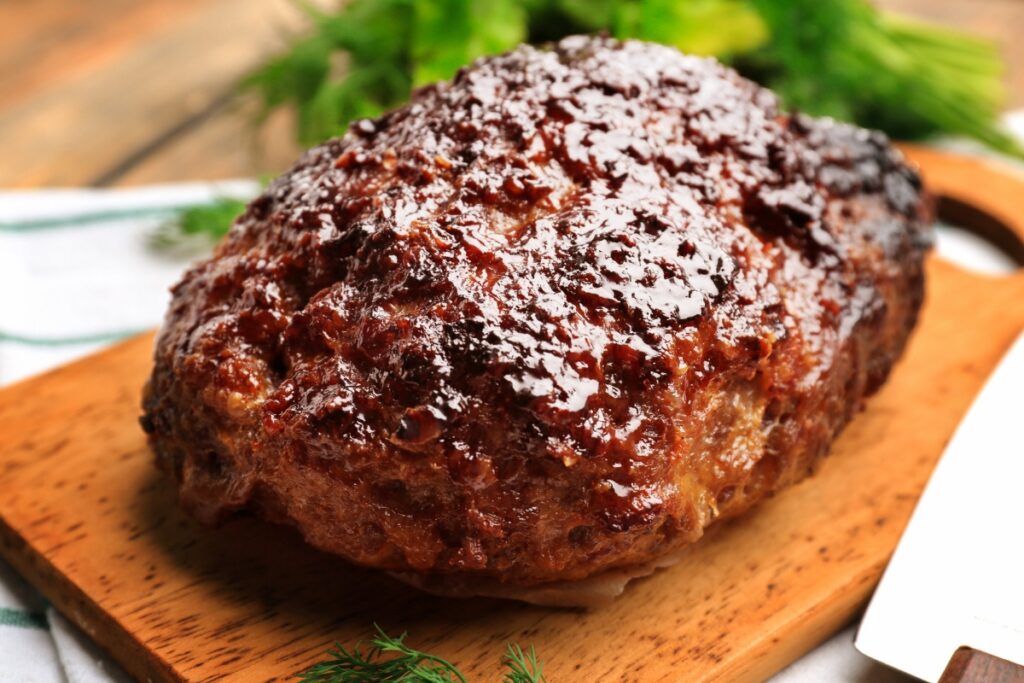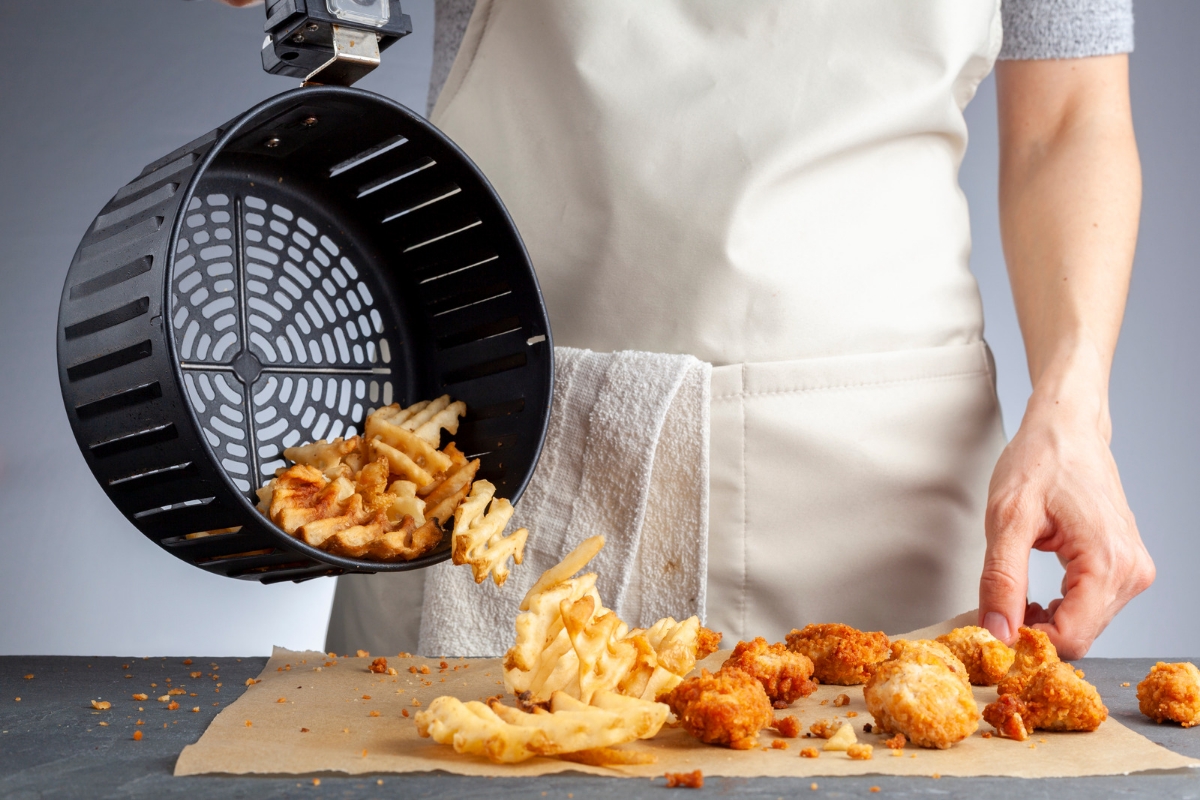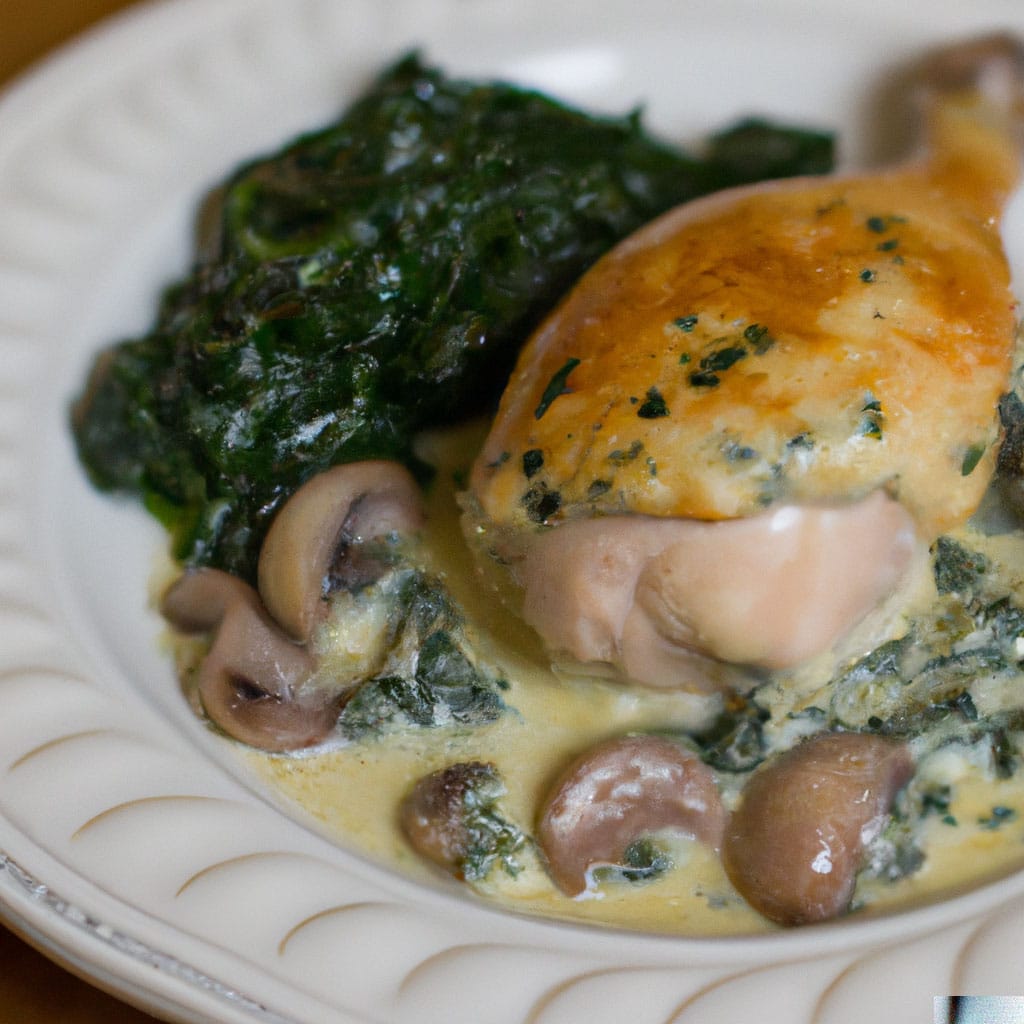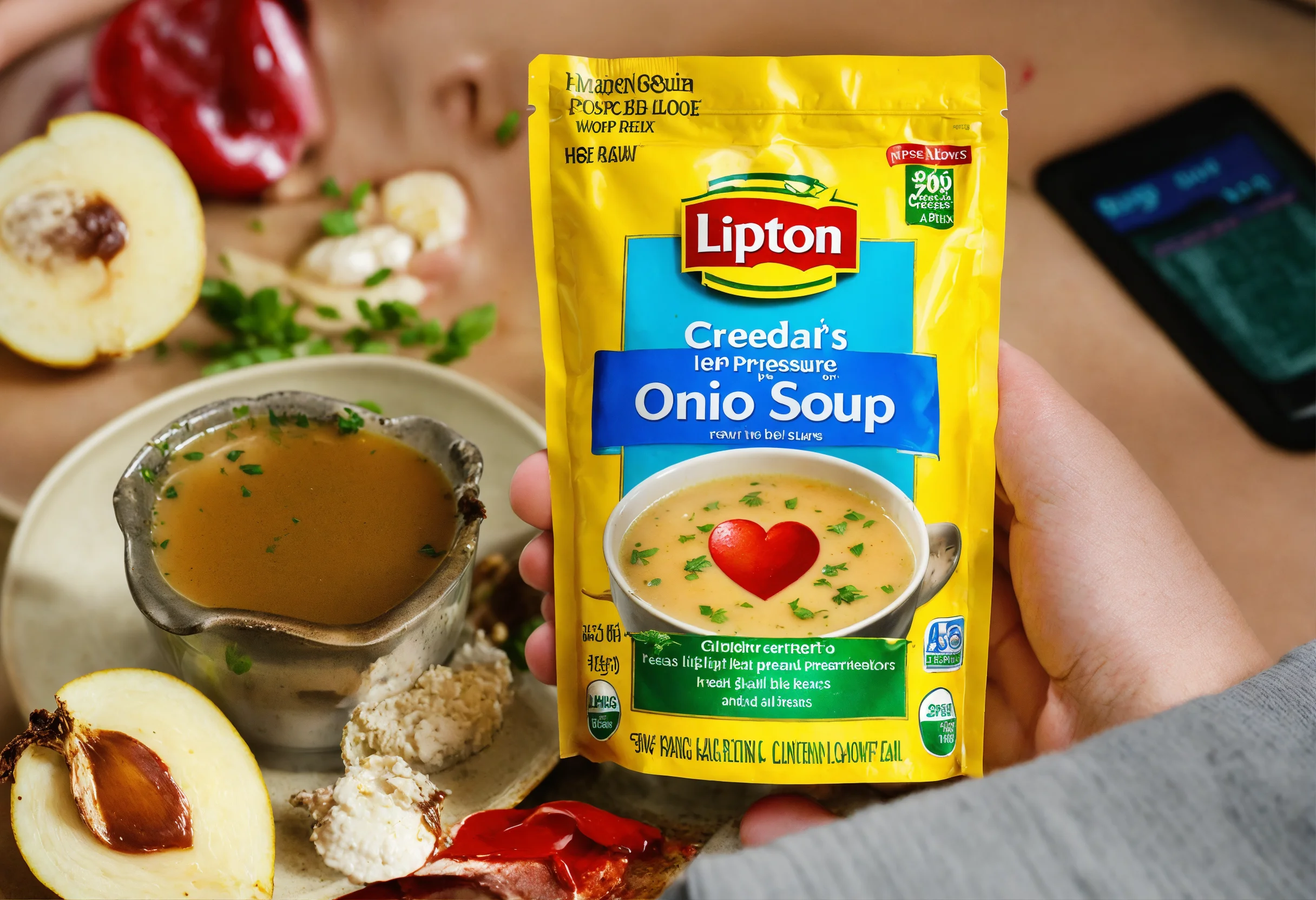Introduction to Moist Meatloaf
Understanding Moist Meatloaf
When it comes to comfort food, meatloaf holds a special place in the hearts and kitchens of many. This classic dish, beloved for its simplicity and heartiness, can vary greatly in texture and taste depending on its preparation. The quest for a moist meatloaf is universal, as it’s the moisture that often determines its success or failure. Understanding the elements that contribute to a perfectly moist meatloaf is essential for both novice cooks and seasoned chefs alike.
The Importance of Moisture in Meatloaf
Moisture in meatloaf isn’t just about preventing a dry, crumbly meal; it’s about enhancing the entire eating experience. A moist meatloaf is tender, flavorful, and holds together well, making each slice a delight to savor. Moisture affects everything from the loaf’s texture to its taste, binding the ingredients into a cohesive, palatable dish. It’s the difference between a forgettable meal and one that beckons you back for seconds.
But what exactly makes a meatloaf moist? It’s a combination of factors including the choice of meat, the use of binding agents like eggs and breadcrumbs, and the incorporation of liquids such as milk, broth, or even grated vegetables. Each of these components plays a crucial role in retaining moisture, ensuring that as the meatloaf cooks, it doesn’t dry out but instead remains succulent and juicy.
Common Challenges in Achieving Moist Meatloaf
Despite the best intentions, achieving the perfect moist meatloaf can be elusive. Common challenges include using too much bread filler, which can absorb moisture and leave the loaf dry, or overcooking, which saps the meat of its natural juices. Selecting the right type of meat is also crucial; lean meats, while healthier, often lack the fat necessary to keep the loaf moist. Understanding these pitfalls is the first step in avoiding them.
Another frequent issue is inadequate mixing. While overmixing can toughen the meat, undermixing can lead to an uneven distribution of ingredients, causing some parts to be drier than others. Additionally, neglecting to rest the meatloaf before slicing can result in the loss of precious juices, as they haven’t had time to redistribute throughout the loaf.
In the following sections, we’ll delve deeper into the secrets behind a moist meatloaf, exploring the ingredients, techniques, and tips that can elevate your meatloaf from merely good to truly great. Whether you’re a meatloaf aficionado or a curious cook looking to perfect your recipe, understanding these elements is key to achieving the ultimate comfort food experience.
The Secrets to Moist Meatloaf
Creating a moist meatloaf is akin to crafting a culinary masterpiece. It’s not just about following a recipe; it’s about understanding how each component and technique contributes to the final product. In this section, we’ll explore the key ingredients and preparation techniques that are crucial for ensuring your meatloaf is irresistibly moist.
Heading: Key Ingredients for Moisture

The journey to a moist meatloaf begins with selecting the right ingredients. Each element plays a specific role in contributing to the dish’s moisture and overall flavor profile.
The Role of Aromatic Vegetables
Aromatic vegetables are the unsung heroes of moist meatloaf. Ingredients like onions, carrots, celery, and bell peppers aren’t just flavor enhancers; they’re also moisture contributors. When these vegetables are finely diced and added to the meat mixture, they release moisture as they cook, infusing the meatloaf with both flavor and juiciness.
To maximize their impact, consider sautéing the vegetables in a bit of butter or oil before adding them to the mix. This step helps to soften the vegetables and release their natural sugars, leading to a deeper flavor and additional moisture. The type and amount of vegetables can be varied according to taste, but a good rule of thumb is to ensure they’re finely chopped or grated so they distribute evenly throughout the loaf.
The Impact of Fats and Oils
Fat is a critical ingredient in achieving a moist meatloaf. It provides richness, flavor, and, most importantly, moisture. Lean meats can result in a drier loaf, so a blend of meats, often a combination of beef, pork, or veal, is used to strike the right balance between flavor and fat content. The fat melts as the meatloaf cooks, weaving moisture and flavor throughout every bite.
In addition to the fat within the meat, adding oils or other fat sources like cream or cheese can further enhance the moisture. These ingredients help to bind the meatloaf together and ensure that it remains succulent and tender.
Preparation Techniques
The way you prepare and cook your meatloaf is just as important as the ingredients you use. Even with the best components, improper mixing or cooking can lead to a dry, disappointing result.
Mixing Methods
The mixing process is crucial in creating a uniform and cohesive meatloaf. However, there’s a delicate balance to maintain. Overmixing can lead to a dense, tough texture as the proteins in the meat develop too much. On the other hand, undermixing might result in an uneven distribution of ingredients, causing some parts to be drier or less flavorful.
To achieve the perfect mix, combine the ingredients until they’re just incorporated. Use your hands for better control and a gentler touch, ensuring that the fat and moisture are evenly distributed without overworking the meat.
Cooking Temperatures and Times
The cooking temperature and time can make or break your meatloaf’s moisture level. A moderate oven temperature, typically around 350°F (175°C), is ideal for cooking meatloaf thoroughly without drying it out. The internal temperature of the meatloaf should reach 160°F (71°C) for beef or pork to ensure it’s cooked safely, but going beyond this can lead to overcooking and moisture loss.
Using a meat thermometer is the best way to ensure your meatloaf is cooked perfectly. Additionally, letting the meatloaf rest for about 10 minutes after removing it from the oven allows the juices to redistribute, ensuring that each slice is as moist as possible.
In the next sections, we’ll continue to explore advanced tips and tricks, as well as address common mistakes and how to avoid them. With the right ingredients and techniques, you’ll be well on your way to creating a meatloaf that’s not just moist but memorably so.
Advanced Tips and Tricks
Crafting the perfect meatloaf is an art that involves more than just following a recipe. It’s about understanding how each component interacts and how subtle changes can significantly enhance the dish’s flavor and moisture. In this section, we’ll delve into advanced tips and tricks that can elevate your meatloaf from good to exceptional.
Enhancing Flavors and Moisture
A truly memorable meatloaf is one that’s not only moist but also rich in flavor. Achieving this involves a combination of traditional techniques and innovative additions.
The Use of Binders
Binders are crucial in meatloaf for holding the ingredients together and contributing to the overall texture. Common binders include breadcrumbs, oatmeal, and even cooked rice. However, the choice and amount of binder can significantly affect the meatloaf’s moisture and flavor.
Breadcrumbs, for instance, should be used judiciously. Too many can absorb moisture and lead to a dry loaf, while too few might not provide enough structure. Consider soaking breadcrumbs in milk or broth before adding them to the mixture. This not only prevents them from drying out the meat but also adds an extra layer of moisture and flavor.
Moisture-Enhancing Additives
Beyond the traditional ingredients, several additives can enhance the moisture and flavor of your meatloaf. Grated cheese, for example, can introduce both richness and moisture. Vegetables like zucchini or mushrooms, finely grated or chopped, can also add moisture and a nutritional boost.
For an umami flavor and moisture kick, consider incorporating condiments like Worcestershire sauce, soy sauce, or tomato paste. These ingredients bring depth and complexity to the flavor profile while contributing to the overall juiciness of the meatloaf.
Mistakes to Avoid
Even with the best ingredients and intentions, certain common mistakes can lead to a less-than-ideal meatloaf. Being aware of these pitfalls is the first step in avoiding them.
Overmixing the Ingredients
Overmixing is one of the most common mistakes in meatloaf preparation. It’s tempting to keep mixing to ensure all ingredients are well combined, but this can lead to a tough, dense texture. The proteins in the meat develop too much, squeezing out the moisture and leaving you with a dry loaf. Mix until just combined for a tender, moist meatloaf.
Choosing the Wrong Meat
The type of meat you use significantly impacts the moisture and flavor of your meatloaf. While lean meats are healthier, they often result in a drier loaf. A mixture of meats, such as beef and pork, can provide a good balance of flavor and fat content. The fat melts during cooking, distributing moisture and flavor throughout the loaf. Be mindful of the meat’s fat content and consider blending different types for the best results.
By understanding and implementing these advanced tips and tricks, you’ll be well-equipped to create a meatloaf that’s not just moist and flavorful but also a standout dish in your culinary repertoire.
Recipe Variations
A great meatloaf recipe is a staple in many households, but sometimes it’s fun to shake things up a bit. Whether you’re sticking to the classic version or looking for something new and exciting, understanding how to adapt your recipe can lead to delicious results. Here, we’ll explore a classic moist meatloaf recipe and then dive into some innovative variations.
Classic Moist Meatloaf Recipe
The classic meatloaf is all about simplicity and comfort. It’s a dish that’s both familiar and satisfying, with a tender, juicy interior and a flavorful crust.
Ingredients and Instructions
Ingredients:
- 1 lb ground beef
- 1/2 lb ground pork
- 1 medium onion, finely chopped
- 1 carrot, grated
- 2 cloves garlic, minced
- 1 cup breadcrumbs
- 1/2 cup milk
- 2 eggs
- 2 tbsp ketchup
- 1 tbsp Worcestershire sauce
- Salt and pepper to taste
- Optional: 1/4 cup fresh parsley, chopped
Instructions:
- Preheat your oven to 350°F (175°C).
- In a small bowl, soak the breadcrumbs in milk until absorbed.
- In a large bowl, combine the ground beef and pork, onion, carrot, garlic, and parsley if using.
- Add the soaked breadcrumbs, eggs, ketchup, Worcestershire sauce, salt, and pepper to the meat mixture.
- Mix until just combined, being careful not to overmix.
- Shape the mixture into a loaf and place it in a baking dish.
- Bake for about 1 hour or until the internal temperature reaches 160°F (71°C).
- Let the meatloaf rest for 10 minutes before slicing and serving.
Innovative Meatloaf Variations
Sometimes, a twist on the traditional can lead to exciting new flavors and textures. Here are a couple of variations to inspire your next meatloaf adventure.
Vegetarian Options
For a vegetarian take on the classic meatloaf, consider using lentils, chickpeas, or a meat substitute as your base. Add in sautéed vegetables, nuts, and seeds for texture and flavor. Bind everything together with eggs or a flax egg and breadcrumbs. Season well and bake until firm and golden.
Global Flavors
Incorporating ingredients from various cuisines can transform your meatloaf into a global delicacy. For an Italian twist, mix in sun-dried tomatoes, basil, and parmesan cheese. For a Mexican version, add some cumin, chili powder, and a bit of jalapeno. Don’t forget to top it with salsa and cheese. Experimenting with spices, herbs, and sauces from around the world can lead to a delightful and unexpected meal.
By exploring these classic and innovative meatloaf variations, you can keep this beloved dish exciting and ensure there’s always something new to try in your kitchen. Whether you stick to the traditional recipe or venture into new culinary territories, meatloaf is a versatile dish that’s sure to please.
FAQs
Meatloaf, with its comforting and familiar taste, often brings up questions about the best ways to prepare, store, and adapt it. In this section, we’ll address some of the most frequently asked questions to help you perfect your meatloaf experience.
Heading: Frequently Asked Questions (300 words)
Subheading: How to Store and Reheat Meatloaf
Storing Meatloaf:
- Cool Down: Allow your meatloaf to cool to room temperature before storing to prevent condensation and bacterial growth.
- Refrigerate: Wrap the meatloaf tightly in plastic wrap or aluminum foil, or place it in an airtight container. Store it in the refrigerator for up to 3-4 days.
- Freeze: For longer storage, wrap the meatloaf tightly in plastic wrap and then in aluminum foil. Label with the date and freeze for up to 3 months. Thaw in the refrigerator before reheating.
Reheating Meatloaf:
- Oven Method: Preheat your oven to 250°F (120°C). Place the meatloaf slices on a baking sheet, add a splash of water or broth to keep it moist, and cover with foil. Heat for 20-25 minutes or until warmed through.
- Microwave: Place slices on a microwave-safe plate, cover with a damp paper towel to retain moisture, and heat on medium power in 30-second intervals until warm.
Subheading: Common Substitutes for Ingredients
Sometimes you might find yourself missing an ingredient or needing to adapt a recipe for dietary reasons. Here are some common substitutes:
- For Ground Meat: Use a combination of beef, pork, or turkey, depending on your preference and dietary needs. For a vegetarian option, lentils, chickpeas, or a meat substitute can work well.
- For Breadcrumbs: If you’re out of breadcrumbs or need a gluten-free option, consider using rolled oats, crushed crackers, or gluten-free breadcrumbs.
- For Eggs (Binder): If you’re allergic to eggs or vegan, you can use a “flax egg” (1 tbsp ground flaxseed mixed with 3 tbsp water, let sit until thickened) or mashed tofu as a binder.
- For Milk: Any dairy or non-dairy milk (like almond, soy, or oat milk) can be used to soak the breadcrumbs and add moisture.
- For Ketchup: Tomato paste, BBQ sauce, or a mixture of tomato sauce with a bit of vinegar and sugar can substitute for ketchup in a pinch.
Understanding how to store, reheat, and substitute ingredients in your meatloaf can make the process smoother and more adaptable to your needs. With these tips, you can enjoy your meatloaf at its best, whether it’s freshly made or enjoyed as leftovers.
Conclusion
Meatloaf, a timeless classic, remains a beloved dish in many cultures due to its comforting flavors, versatility, and the warmth it brings to any table. This guide has walked you through the intricacies of creating a moist and flavorful meatloaf, from understanding the importance of key ingredients and preparation techniques to exploring innovative variations and addressing common questions.
Remember, the secret to a perfect meatloaf lies in the balance of moisture, flavor, and texture. The right combination of meats, aromatic vegetables, binders, and seasonings, coupled with careful preparation and cooking techniques, can elevate your meatloaf from a simple meal to a culinary delight. Don’t be afraid to experiment with different ingredients and flavors to find the combination that best suits your taste.
Moreover, the versatility of meatloaf allows it to be adapted to various dietary preferences and restrictions. Whether you’re making a classic meatloaf, a vegetarian version, or one inspired by global flavors, the principles of moisture and flavor remain the same. And with the tips provided on storing and reheating, you can enjoy your meatloaf at its best, even as leftovers.
In the end, meatloaf is more than just a dish; it’s a canvas for creativity, a comfort food that evokes memories, and a testament to the simple joy of cooking and sharing a meal with loved ones. So, the next time you set out to make meatloaf, remember the insights and tips from this guide, and embark on a culinary journey that’s sure to yield a delicious and satisfying result. Happy cooking!




